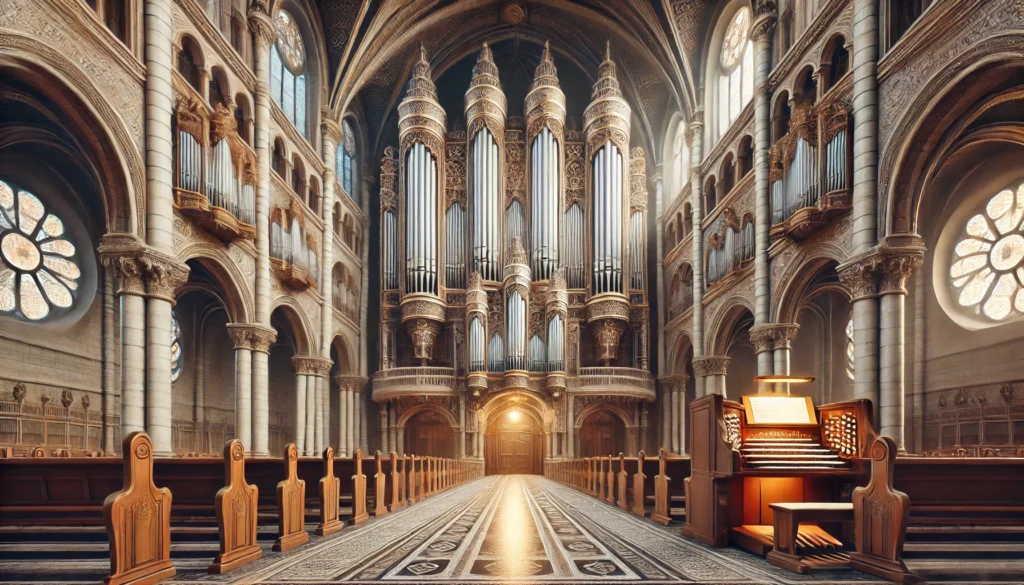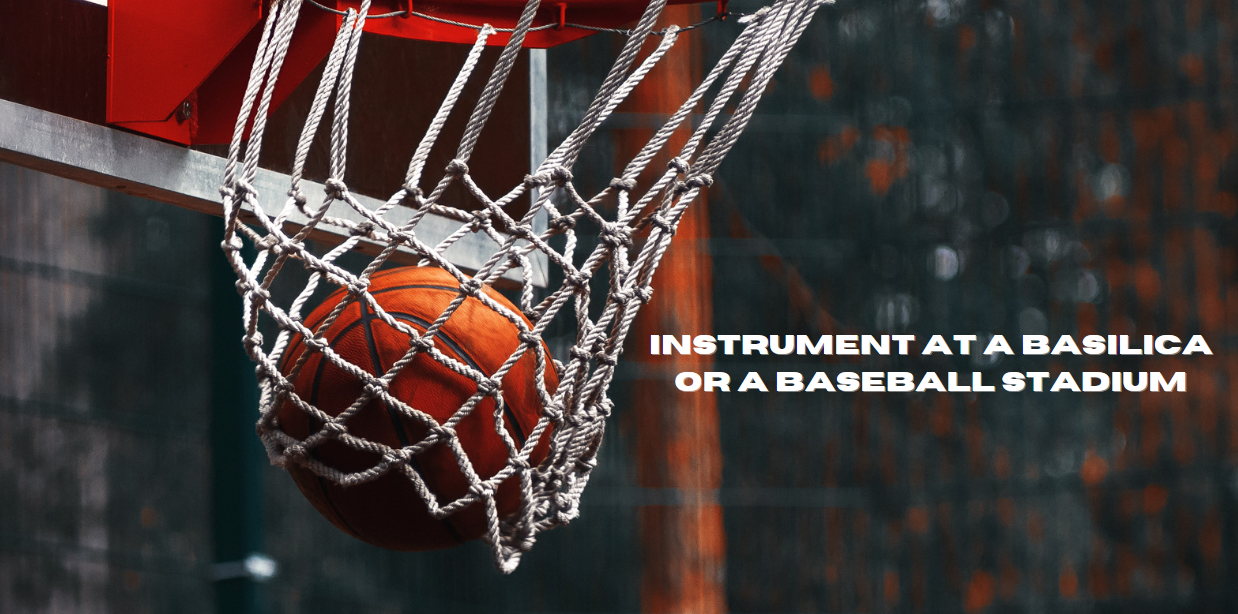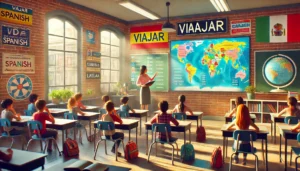The Soul of Soundscapes Exploring Instrument at a Basilica or a Baseball Stadium
Introduction
Imagine the profound and resonant notes of an organ filling the sacred space of a basilica. Now, compare that to the electrifying burst of a trumpet echoing through a baseball stadium. Both settings offer unique soundscapes that enthrall diverse audiences. Whether you’re a music enthusiast, sports fan, or history buff, exploring the instrument at a basilica or a baseball stadium uncovers a fascinating intersection of art, culture, and history. This blog aims to take you on a captivating auditory journey through these spaces, highlighting their historical significance, the unique instrument at a basilica or a baseball stadium involved, and the profound impact they have on their respective environments.
The Organ at the Basilica
A Brief History of the Basilica Organ
The organ is synonymous with the grandeur of basilicas. Often regarded as the “king of instrument at a basilica or a baseball stadium,” the organ has a rich history dating back to ancient Greece. However, its association with Christian liturgy began in the medieval period. The organ’s intricate design and the complex interplay of pipes and keys made it a symbol of divine craftsmanship.
Craftsmanship and Construction
Crafting an organ for a basilica is a monumental task requiring years of meticulous work. Each pipe is hand-crafted and tuned to perfection. Master artisans often use noble materials like wood, metal, and ivory. The result is an instrument at a basilica or a baseball stadium that not only produces heavenly sounds but also stands as a masterpiece of art and engineering.
The Acoustic Marvel
The basilica itself plays a crucial role in enhancing the organ’s sound. The high ceilings, stone walls, and expansive nave create an environment where sound waves can travel freely, producing a rich, reverberating effect. This acoustic marvel transforms simple notes into a celestial symphony that can move even the most stoic listener.

Instruments in Baseball Stadiums
The Role of Music in Sports
Music has always had a place in sports, serving to elevate the excitement and create a communal atmosphere. Baseball stadiums, in particular, use various instrument at a basilica or a baseball stadium to enhance the spectator experience. From the organist playing traditional baseball tunes to modern-day DJs spinning upbeat tracks, music is integral to the game-day experience.
The Iconic Stadium Organ
The stadium organ holds a special place in the hearts of baseball fans. Introduced in the early 20th century, the organ quickly became a staple. It was initially used to entertain fans before the game and during breaks. Over time, iconic tunes like “Take Me Out to the Ball Game” became synonymous with the sport.
Modern Musical Additions
While the organ remains a beloved fixture, modern baseball stadiums have welcomed additional musical elements. Live bands, orchestras, and even solo artists often perform before important games or during special events. These performances add a new layer of excitement and engagement for fans.
Comparing the Soundscapes
Sacred vs. Secular
The soundscape of a basilica is one of reverence and solemnity, designed to elevate the spiritual experience. In contrast, a baseball stadium aims to energize and entertain, creating a sense of camaraderie among fans. Both environments use music to evoke emotion, but the intent and execution differ vastly.
The Emotional Impact
The organ in a basilica often evokes feelings of awe and introspection. The music complements the sacred rituals and enhances the sense of divine presence. On the other hand, the lively tunes at a baseball stadium aim to excite, motivate, and unify the crowd, creating unforgettable moments of collective joy.
Acoustic Differences
The acoustics of a basilica and a baseball stadium are tailored to their respective functions. While basilicas are designed to amplify and sustain sound, stadiums focus on clarity and volume to ensure that every note reaches the farthest seat. These acoustic differences profoundly affect how music is experienced in each setting.
Historical Significance
The Basilica as a Cultural Hub
Basilicas have long been centers of cultural and artistic expression. The organ, with its complex mechanics and beautiful sound, became a focal point of these sacred spaces. Over centuries, basilicas hosted renowned organists and composers, contributing to the rich tapestry of classical music.
Baseball Stadiums and Popular Culture
Baseball stadiums, too, have their place in cultural history. The music played within these venues often mirrors popular trends, making them a reflection of societal changes. From jazz and swing in the early 1900s to rock and hip-hop today, the musical evolution within stadiums offers a fascinating glimpse into cultural shifts.
The Role of Technology
Advances in Organ Design
Modern technology has significantly impacted the design and function of organs in basilicas. Digital components now complement traditional craftsmanship, allowing for greater versatility and precision. Advanced tuning systems and computerized controls have opened new possibilities for organists.
High-Tech Stadiums
Similarly, technology has revolutionized music in baseball stadiums. High-definition sound systems and sophisticated DJ equipment ensure that every note is crystal clear. Interactive apps and digital platforms also allow fans to influence the music played, creating a more personalized experience.

Notable Examples
St. Peter’s Basilica
St. Peter’s Basilica in Vatican City is home to one of the world’s most famous organs. This majestic instrument at a basilica or a baseball stadium has been the backdrop for countless historic events and performances. Its intricate design and powerful sound make it a true marvel of musical engineering.
Wrigley Field
Wrigley Field in Chicago is renowned for its iconic stadium organ. The organist at Wrigley Field plays a crucial role in creating the unique atmosphere that Cubs fans cherish. From classic baseball tunes to contemporary hits, the music at Wrigley Field enhances every game-day experience.
Cultural Reflections
Music as a Voice of Community
Both the organ in a basilica and the music in baseball stadiums serve as powerful voices of the communities they represent. In basilicas, the organ’s melodies resonate deeply, often reflecting the values, beliefs, and traditions of the congregation. It acts as a vessel for communal worship, uniting individuals in shared spiritual experiences. Conversely, the music in stadiums embodies the spirit of sportsmanship and camaraderie. Fans identify with the anthems of their teams, forming an emotional bond that strengthens community ties and fosters a sense of belonging.
The Evolution of Musical Taste
Over the decades, the taste in music played in these contrasting venues has evolved. In basilicas, composers such as Bach and Mendelssohn remain timeless, while contemporary organists may integrate modern musical elements to appeal to new audiences, bridging traditional spirituality with current cultural influences. In baseball stadiums, playlists are curated to reflect the latest musical trends, with genres evolving alongside the sport itself. The careful selection of music creates an atmosphere that resonates with both seasoned fans and newcomers, reinforcing the sport’s relevance in today’s diverse cultural landscape.
The Future of Music in Sacred Spaces and Sports Venues
Innovations in Musical Expression
As we look to the future, both sacred spaces and sports venues will likely continue to adapt to the evolving landscape of technology and audience expectation. In basilicas, we may see further integration of multimedia elements that enhance worship experiences. Virtual reality, for instance, could allow congregants to immerse themselves in a multi-sensory environment, providing a deeper connection to the music and the service. Similarly, in baseball stadiums, innovations such as live-streamed performances and fan-generated playlists could redefine the in-game atmosphere, fostering a more interactive experience for attendees.
A Harmonious Coexistence
As societal values shift, the dialogue between sacred and secular music environments is becoming increasingly relevant. Both spaces can learn from one another to create inclusive experiences that resonate across different demographics. By acknowledging the emotional power of music, both basilicas and baseball stadiums can cultivate environments that not only entertain but also inspire and uplift communities, fostering a shared sense of belonging and joy. Ultimately, the enchanting melodies of organs and the energy of stadium music continue to weave through the fabric of our cultural identity, each playing a distinct yet complementary role in the evolving story of music and community.
Celebrating Diversity in Musical Heritage
The Global Influence
Music in both basilicas and baseball stadiums reflects not only local culture but also global influences. As communities become more diverse, the musical traditions incorporated into these spaces expand, celebrating a rich tapestry of sounds. In basilicas, the integration of music from different cultures can enhance worship services, allowing congregations to experience and embrace a wider range of spiritual expressions. This might include incorporating world music instrument at a basilica or a baseball stadium or styles that resonate with the diverse backgrounds of the congregation.
Fostering Inclusivity in Sports
In baseball stadiums, this cultural inclusivity is increasingly evident in the music selections played during games. Teams and stadiums are recognizing the significance of representing their communities through diverse playlists, featuring melodies from various genres and artists that reflect the demographic changes in the fanbase. Such efforts not only enrich the game-day experience but also foster a sense of belonging among all fans, forging connections that transcend cultural boundaries.
Collaborative Musical Events
Furthermore, collaborative musical events, such as concerts or festivals held in these spaces, can serve as powerful platforms for community engagement. When basilicas and baseball stadiums host such events, they create opportunities for artists and audiences from various backgrounds to come together, share experiences, and explore the universal language of music. These gatherings highlight the ways in which music can unite people, paving the way for stronger community ties and cultural exchange.
As we continue to navigate an ever-changing world, the interplay of music within sacred and secular spaces will remain a vital aspect of our cultural narrative, epitomising the beauty and complexity of human expression.
Conclusion
Exploring the instrument at a basilica or a baseball stadium reveals a fascinating blend of art, culture, and history. Both settings offer unique soundscapes that resonate deeply with their respective audiences. Whether you’re moved by the divine melodies of a basilica organ or energized by the lively tunes in a baseball stadium, these instrument at a basilica or a baseball stadium play a crucial role in shaping our experiences and memories.
In the end, the exploration of these diverse soundscapes reminds us of the profound impact music has on our lives, transcending boundaries and connecting us on a deeper level. For those looking to immerse themselves further, consider visiting a local basilica or attending a baseball game to experience the magic firsthand.














Post Comment